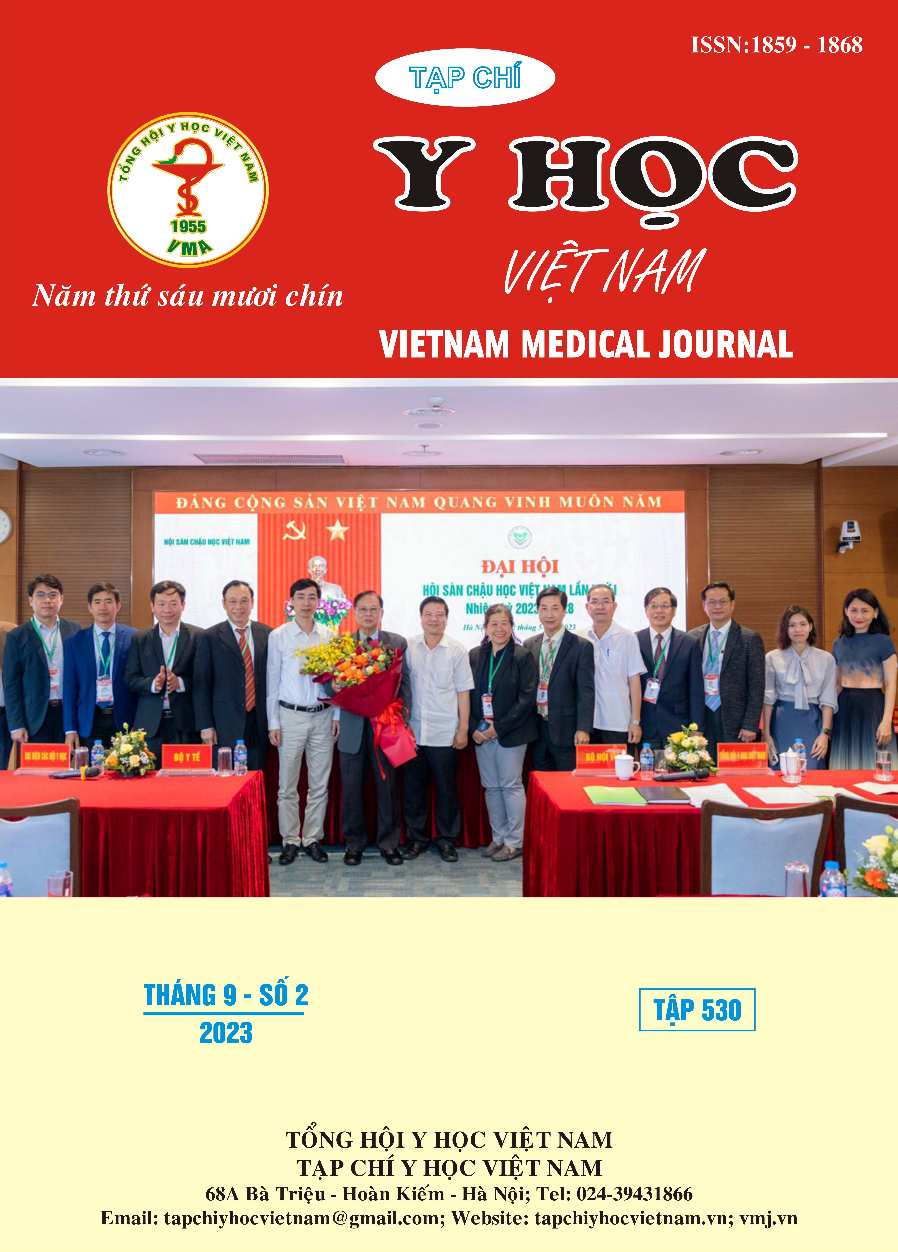INCREASING THE KNOWLEDGE, ATTITUDE, AND PRACTICE OF NURSING ON THE PREVENTION OF ASPIRATION WITH CHOKING IN HIGH- RISK PATIENTS IN UNIVERSITY MEDICAL CENTER, HCMC
Main Article Content
Abstract
Background: Increasing the knowledge, attitude, and practice of nurses on the prevention of aspiration with choking in high-risk patients helps improve the quality of care and patient safety. Objectives: To determine the knowledge, attitude, and practice (KAP) on prevention of aspiration with choking in high-risk patients before training and evaluate the effectiveness of nurses in improving KAP about prevention of aspiration with choking in high-risk patients after training. Subjects and Methods: Intervention design method with a training program designed with 12 repetitions with a duration of 60 minutes for one to train a practice nurse who worked in the eight clinical departments at the University Medical Center, Ho Chi Minh City, from September 2022 to December 2022. Results: Before the training, 83.2% of nurses had an average level of knowledge, 87.5% had a good attitude, and 91.2% had good practices in the prevention of aspiration with choking in high-risk patients. The training program improved knowledge with a mean difference of 5.69 (± 3.89) and attitudes of nurses with a mean difference of 3.51 (± 2.98). Besides, there was not much change in practice after the training. Conclusion: The training program effectively increased the knowledge and attitudes of nurses about the prevention of aspiration with choking in high-risk patients. This program should provide periodic training to health care workers to improve patient care and safety.
Article Details
Keywords
aspiration with choking, nursing, knowledge, attitude, practice.
References
2. Haug MR. Elderly patients, caregivers, and physicians: theory and research on health care triads. J Health Soc Behav. Mar 1994;35(1):1-12
3. Abu-Snieneh H.M., Saleh M.Y.N. Registered Nurse´s Competency to screen dysphagia among stroke patients: Literature review. Open Nurs. J. 2018;12:184–194
4. Sánchez-Sánchez E, Avellaneda-López Y, García-Marín E, Ramírez-Vargas G, Díaz-Jimenez J, Ordonez FJ. Knowledge and Practice of Health Professionals in the Management of Dysphagia. Int J Environ Res Public Health. 2021;18(4):2139. Published 2021 Feb 22.
5. Tan L., Gan G., Hum A., Lee A. A Stepwise, mixed-method study approach to identify the barriers to dysphagia care in hospice care nurses. J. Hosp. Palliat. Nurs. 2018; 20:88–94. doi: 10.1097/NJH.0000000000000404
6. Luo CR, Wei JY, Zhang XM. A multicenter cross-sectional survey of the knowledge, attitudes, and practices of geriatric nurses regarding dysphagia care. Ann Palliat Med. 2022;11(1):16-25.


